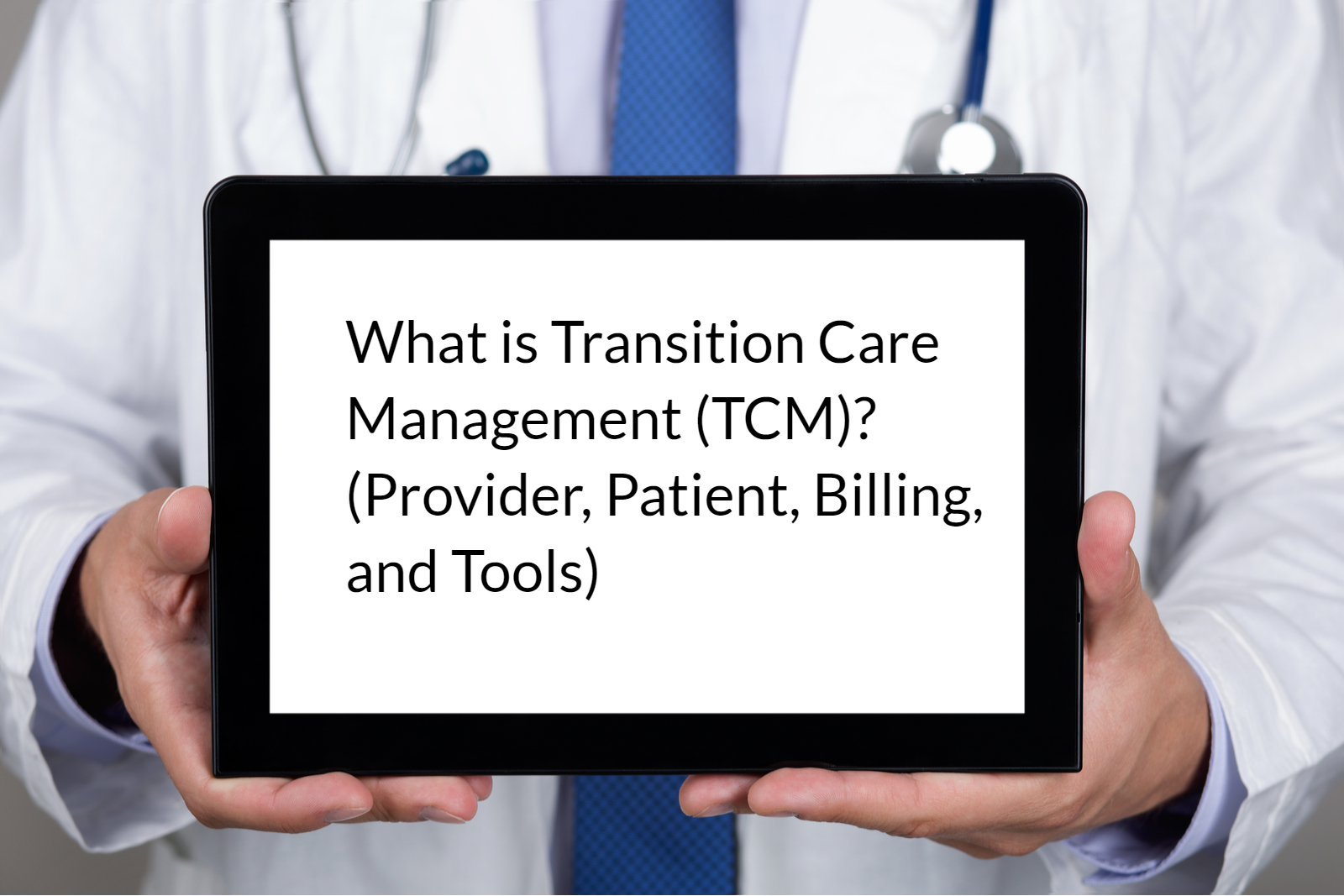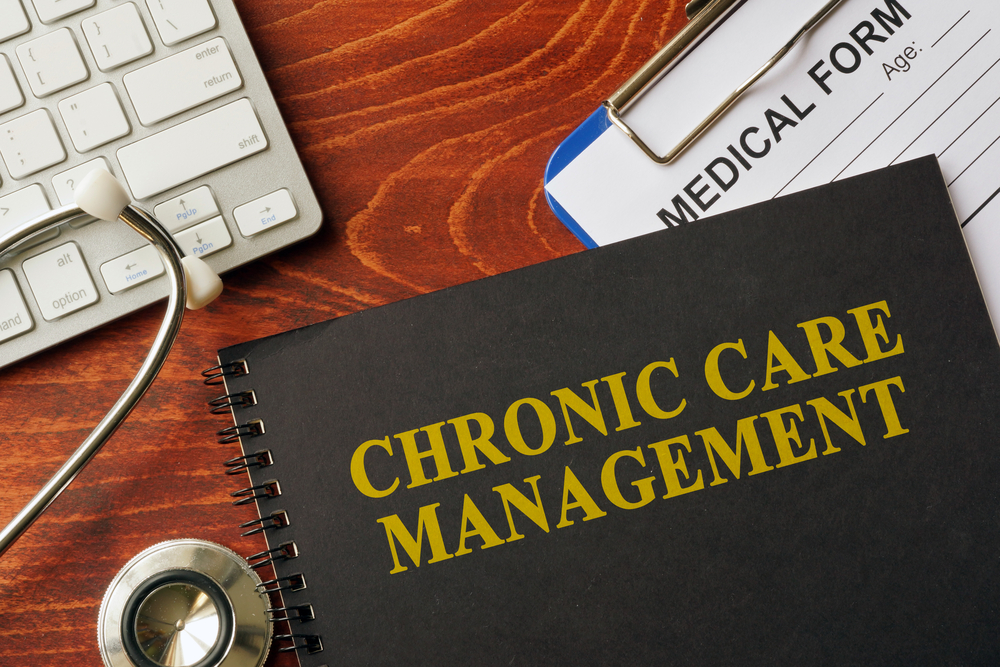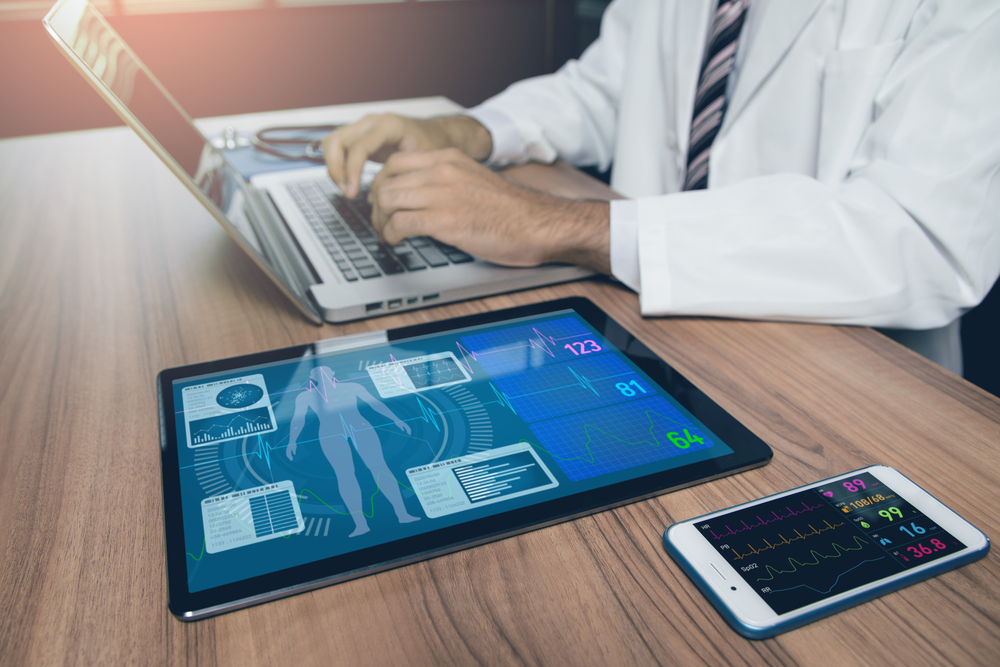You’ve likely heard from your colleagues, or maybe even seen for yourself first-hand, how some patients who aren’t receiving sufficient levels of follow-up care services often end up relapsing and need readmitted into the hospital. If you treat most of your patients in your office, you may not be familiar with longer-term types of healthcare and how to effectively manage these types of patients.
But transitional care management, or TCM, involving managing patient transitions from one level of care to the next, is an essential part of healthcare outcomes improvement. This is what gave rise to the concept of transitional care management (TCM) and the Centers for Medicare and Medicaid Services (CMS) initiative behind it.
Here we explain:
- What TCM Is
- Provider Requirements
- Patient Qualifications
- Billing Requirements
- Tools for Transitional Care Management
- And more.
What is Transition Care Management (TCM) ?
Transition care management (TCM) definition: In it’s basic form, TCM involves addressing the hand-off time between the patient’s stay in the hospital or other inpatient facility and community setting. After the patient’s stay, they might be dealing with a new diagnosis, a medical crisis or a change in medicine therapy. Family doctors often manage the transitional care of their patients.
TCM services involve the transitional care from one of these types of hospital settings:
- Inpatient rehabilitation facility
- Inpatient acute care hospital
- Long-term care hospital
- Inpatient psychiatric hospital
- Skilled nursing facility
- Partial hospitalization within a community mental health facility
- Partial hospitalization or hospital outpatient observation
It includes services provided to patients who have a medical and/or psychosocial problem that requires medical decision making of moderate or high complexity.
TCM Provider Requirements
With TCM, there are transition care management provider requirements. Only specific categories of healthcare professionals qualify to furnish and bill for TCM services. They are:
- Doctors of any specialty
- Clinical nurse specialists
- Certified nurse midwives
- Physicians’ assistants
- Nurse practitioners
Providers who aren’t physicians need to be legally allowed and qualified to provide services in states that offer TCM.
Patient engagement is critical after their discharge from a nursing facility, hospital or another qualifying facility. This is the reason TCM provisions require healthcare professionals to make their first contact within 48 hours of the patient’s discharge.
You’ll have to also make your face-to-face visit with your patient within one or two weeks after they’ve been discharged, depending on how complex the case is.
Keep in mind, in order for you to qualify for TCM reimbursements, you need to use a properly certified EHR application or electronic health records. If you don’t have these it prevents you from being able to benefit from TCM and the substantial additional revenue you can obtain from it.
TCM Patient Qualification
There are also specific transition care management patient qualification terms. To become involved in TCM, there are some requirements you must meet on the patient’s behalf. Patients need to be discharged from a service setting that qualifies such as:
- Inpatient acute care hospitals
- Skilled nursing facilities
- Long-term hospital
- Partial hospitalization
- Inpatient psychiatric hospital
- Hospital outpatient observation
- And any of the others mentioned above
Billing for Transition Care Management
The new Physician Fee Schedule includes TCM codes allowing the reimbursement of non-face-to-face care services provided to patients transitioning to their community from an acute care setting.
You’ll use two new codes to pay for those services you provided that until now weren’t reimbursed.
- CPT Code 99495: This code covers patient or caregiver communication within two business days following discharge. You can do this in person, by phone or by email. It involves at least moderate complexity medical decision-making and face-to-face visit within two weeks of discharge. The place where the visit occurs isn’t specified. The work RVU is 2.11.
- CPT Code 99496: This code covers patient or caregiver communication within two business days following discharge. You can do this in person, by phone or by email. It involves high complexity medical decision making and a face-to-face visit within seven days of discharge. The place where the visit occurs isn’t specified. The work RVU is 3.05.
You should submit your billing statement on the 30th post-discharge period.
Tools for Transition Care Management
Some recommended tools for Transition Care Management are:
1. Establish a hospital discharge process. This should be proceduralized and followed consistently.
2. Identify patients in hospitals that could benefit from TCM. If a hospitalist cares for them, encourage them to let you know before they’re discharged.
3. Use a handheld charge capture software. This can help with identifying discharged patients ,but also to create automatic appointments or wait lists in your practice management system through interfaces.
4. Use a call center or other patient service center. If feasible, this can to help handle and schedule these appointment requests.
5. Use a patient portal tool to communicate with your patients in a timely manner. This portal also allows electronic updates of medication reconciliations and histories in patient charts.
6. Utilize American Academy of Family Physicians (AAFP) FAQ’s on Transitional Care Management. You can find these questions and answers here.
7. Utilize AAFP Transitional Care Management 30-Day Worksheet. You can find this worksheet here. https://familymedicine.med.uky.edu/sites/default/files/TCM30day.pdf
8. Use of Steth IO Health as a tool. Make TCM efficient and effective with Steh IO. With Steth IO Health, you can:
- Communicate with ancillary healthcare services
- Communicate with your patients or their caregivers within 48 hours of their discharge
- Review discharge and medication information
- Increase treatment adherence and provide clinical assessment
- Documentation for appropriate reimbursement
- Interact with other clinicians
Steth IO also makes follow-up clinical trials more cost-effective. Its effective documentation and remote examination make for a more efficient and effective follow-up visit. The digital health technology is convenient to patients and therefore improves enrollment and participation in clinical trials. You can recruit patients remotely and monitor them with electronic data capture such as medicine treatment adherence. Patients can provide digital consent.
Some key takeaways:
- TCM is a CMS initiative to improve the delivery of healthcare while lowering costs.
- CMS designed TCM to keep patients healthier and prevent unnecessary relapses and readmissions.
- You must make one face-to-face visit with the patient in an approved format within 30 days of the patient’s discharge from a clinic or hospital.
- You must conduct a minimum of one non-face-to-face visit during this 30-day period with the patient.
- Better follow-up care through TCM should help reduce complications and other unpleasant outcomes and control CMS healthcare costs.
- There are tools, including Steth IO Health, to help you with the management and billing of patients needing TCM.
Because the healthcare industry continually changes, it’s often difficult to keep up with all the things you need to do with initiatives like TCM. Therefore, any resources and tools, like Steth IO Health, can help make a big difference.
Learn More About Steth IO Health
Steth IO commits to enhancing patient satisfaction and outcomes by building technology. We make patient communication and clinical assessment easier with Steth IO Health. TCM becomes much more efficient and effective. Visit our website to learn more. http://telaspot.com/



